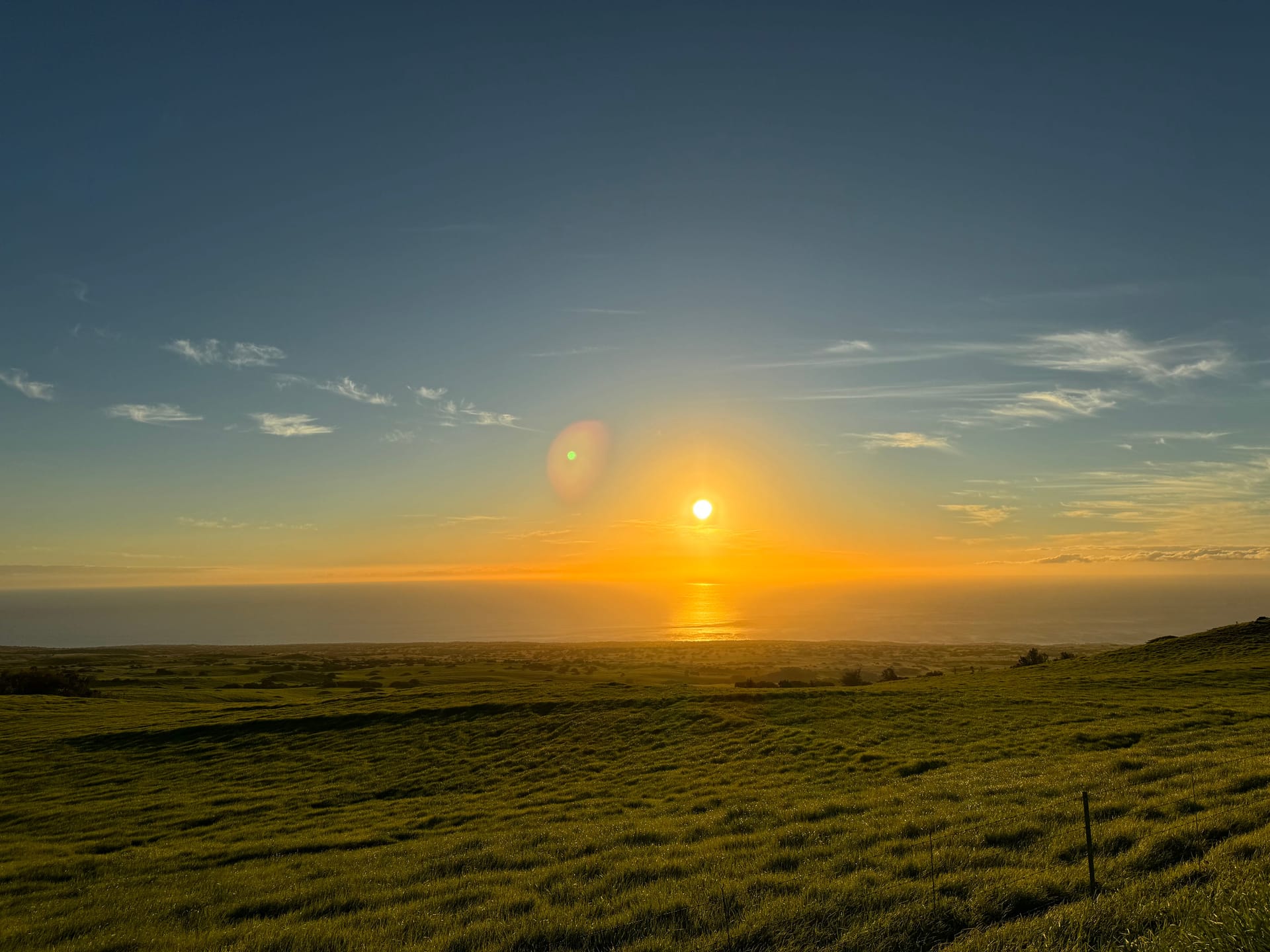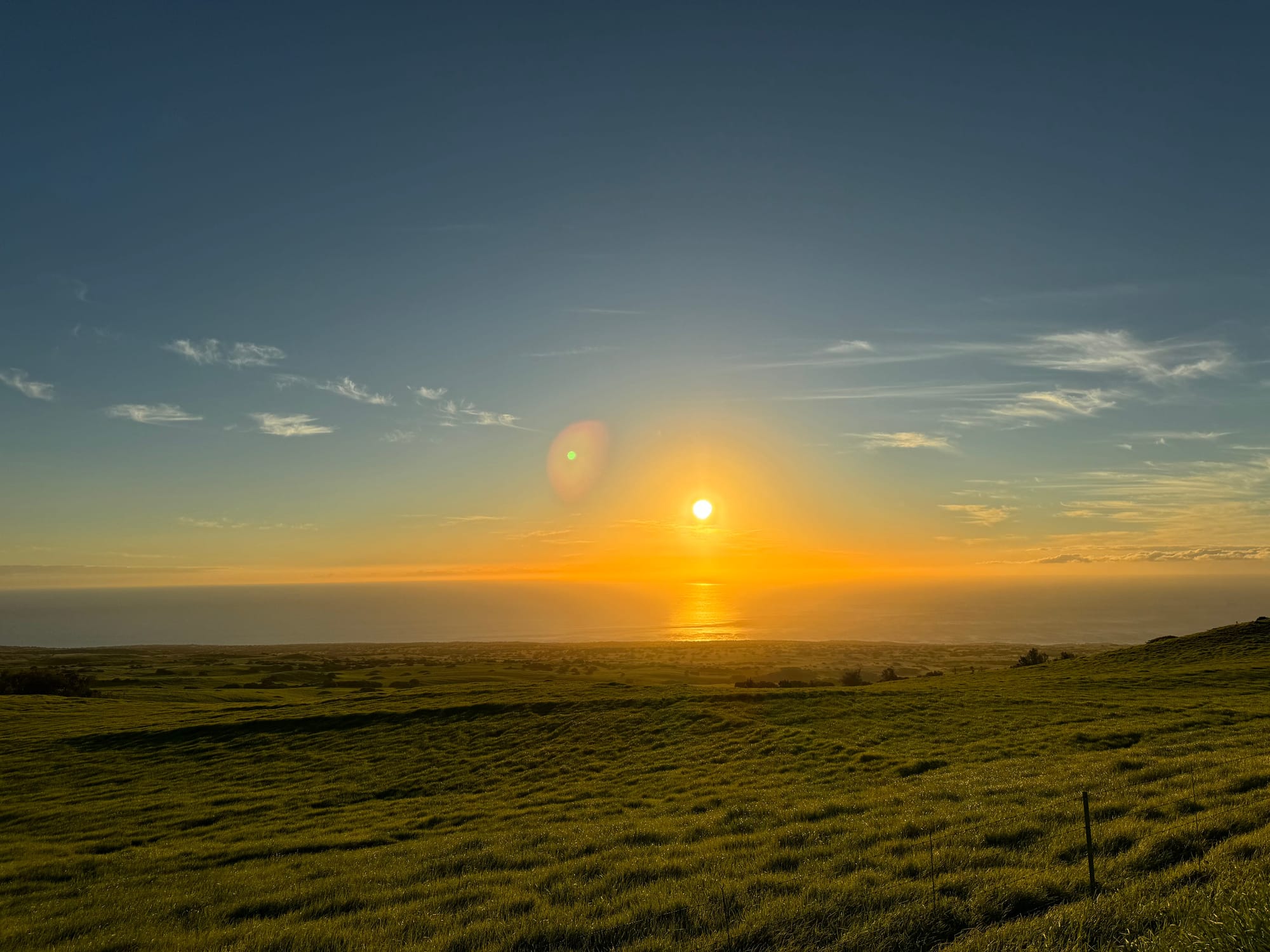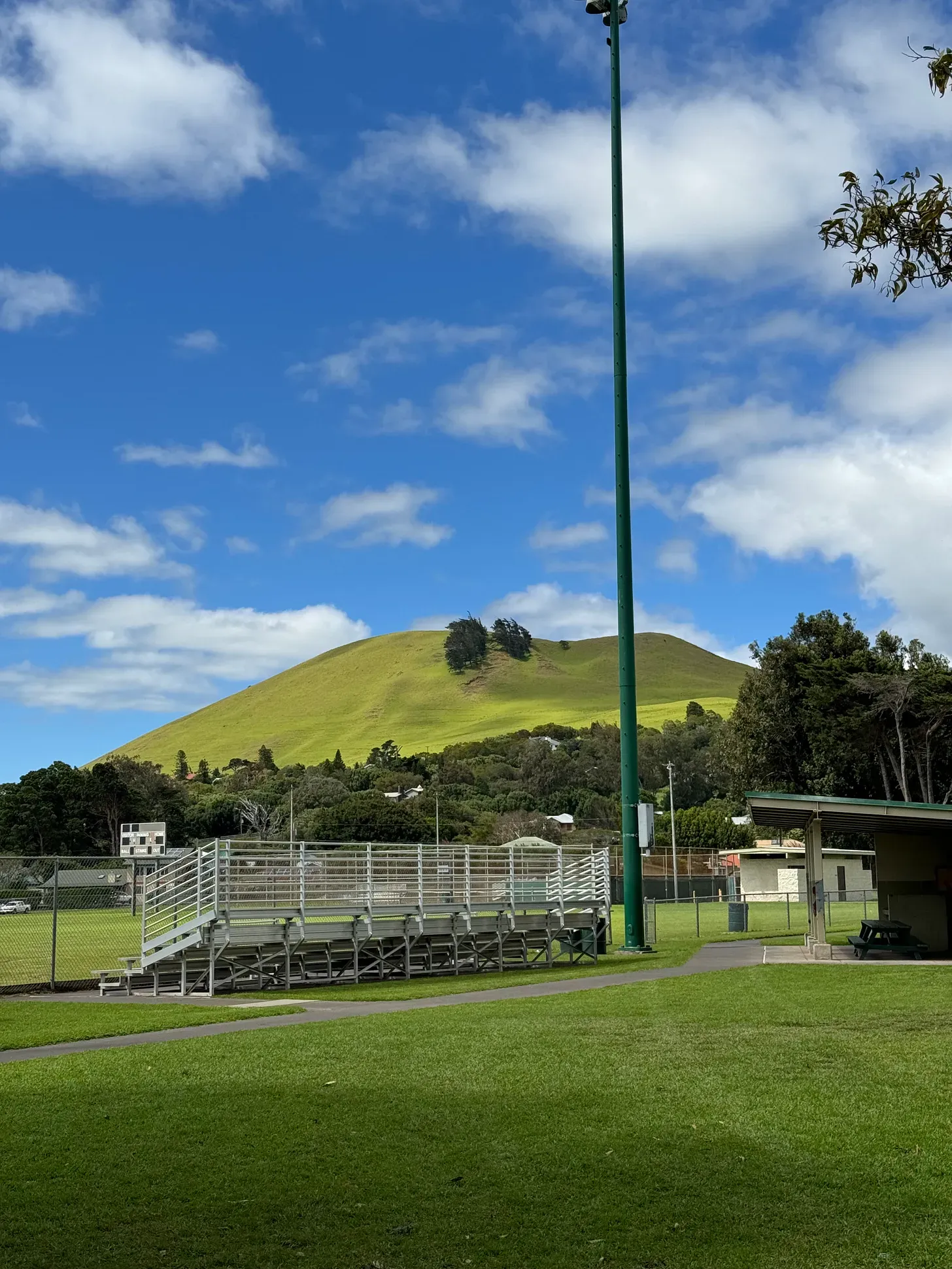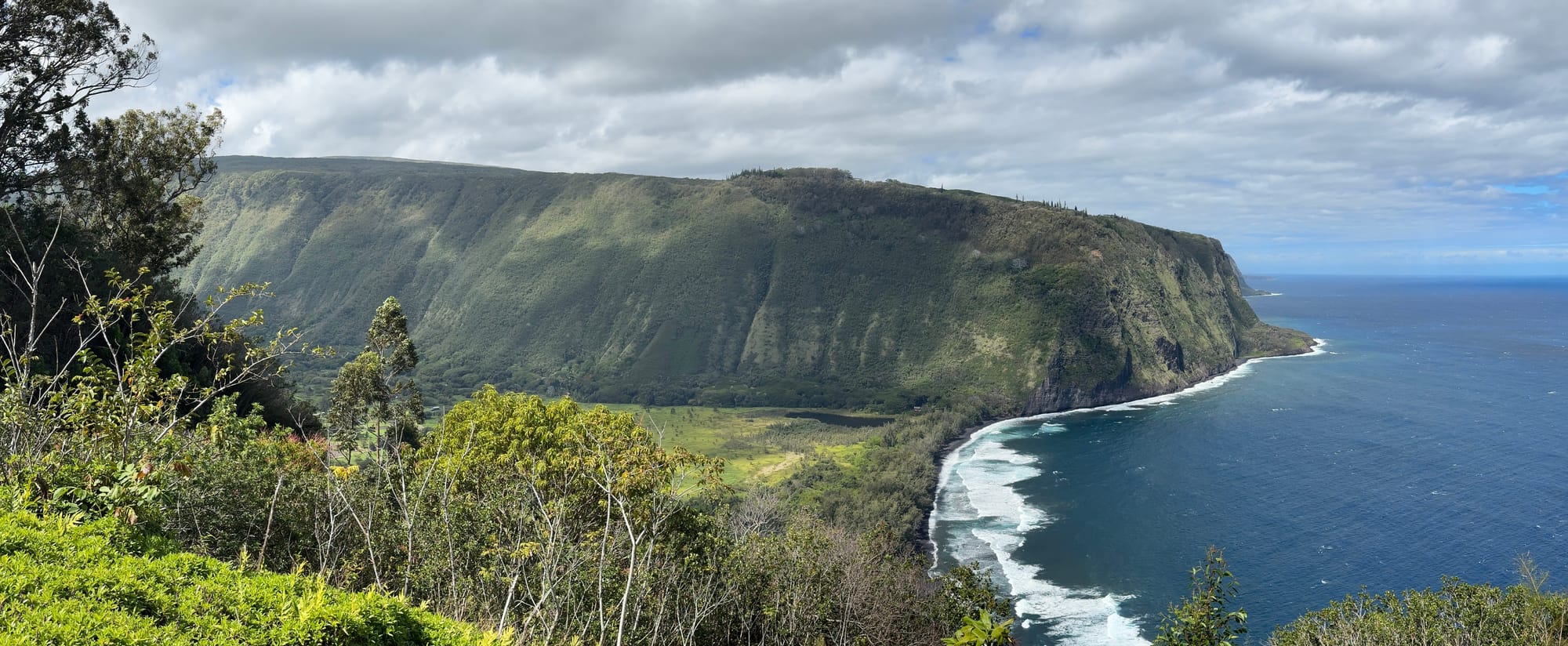Hawai'i, February 2024

It is said that no one should make a major life decision in February. We subscribe to this as denizens of the Pacific Northwest. The short, grey days will get to you. They will make you question your choices. So, rather than existential angst, we decided to warm up with a trip to Hawai’i, the largest island in the Hawaiian chain (and the biggest island in the United States).
There are many guide books and about a zillion SEO optimized websites, so I won’t even attempt to provide a list of what the place has to offer. Suffice it to say, it has lots. And it is big. It has snow on the top, huge grass pastures, wet forests, desert dry lava flows, and spectacular ocean water all around. It’s buffeted by the ever present trade winds and swells from distant storms.

We had been once before and this time opted to stay outside of the mega-resort and instead rent a house on a quiet stretch of ocean front on the northwest side in Puako. This became our base of exploration. We don’t like to plan it all out. We generally focus on where we will stay and what sorts of things we want to do. From there, we let each day come as it wants to, often deciding after breakfast what to do and where to go.
This worked out perfectly. It doesn’t always, but this time we were able to adapt to the weather and folk’s interests. We spent a good amount of time exploring the northern part of the island. From a day-long trip to Volcanoes National Park to random afternoon drives, we explored and listened to the Big Island Revealed Drive Tour. Honestly, it was awesome. Fumbling around with the guidebook while driving down the road is a frustrating experience. This audio tour plays along as you drive, telling you about the history of the places you are near and suggesting diversions that might be interesting.
We really enjoyed learning about the Parker Ranch. Started from cattle that George Vancouver gifted to King Kamehameha I, it eventually spanned over 200,000 acres and was the largest ranch in the US at the time. It was named by John Palmer Parker, born in Massachusetts, who helped the King manage the cattle and eventually married his granddaughter.
It’s hard to describe the beauty and lushness of this up-country grass. The town of Waimea is located in this area of the island and it’s surrounded by these verdant green hills that almost don’t seem real. And this is all mere miles away from the harsh, rough volcanic flows devoid of life on the western side of the island.

North of all of this are a series of remote valleys carved deep into the side of the island. There is no road access and the closest a car can get is either side of the 7 contiguous valleys. The impact of constant swell and heavy rainfall washing down from the mountains has carved this beautiful, but menacing shoreline. The menacing part for me comes from the idea of sailing along it - I can’t help but imagine what it would be like to be in a sailboat along any stretch of water I see. The idea of being blown against this lee shore by the trades and happening upon it after thousands of miles of open ocean strikes deep terror in my sailor’s heart.


We also got to catch a glimpse of a monument to navigation, called Ko’a Heiau Holomoana, from the road around the northwestern corner of the island. It is not clear if this is accessible by foot, but is visible from the road. Among other elements of a larger site, this portion contains a series of upright mounted stones, in the pattern of the Scorpius constellation and aligned such that they point to very, very distant Pacific islands, like Easter Island distant! There isn’t a ton online about it, but it points to the incredible navigational capabilities developed by Tahitian and Marquesasian navigators to find and settle distant Pacific Islands. The practical knowledge to explore thousands of miles across the world’s largest ocean is incredible.
It’s really an incredible island with incredible physical beauty, fascinating history, and full of life.
